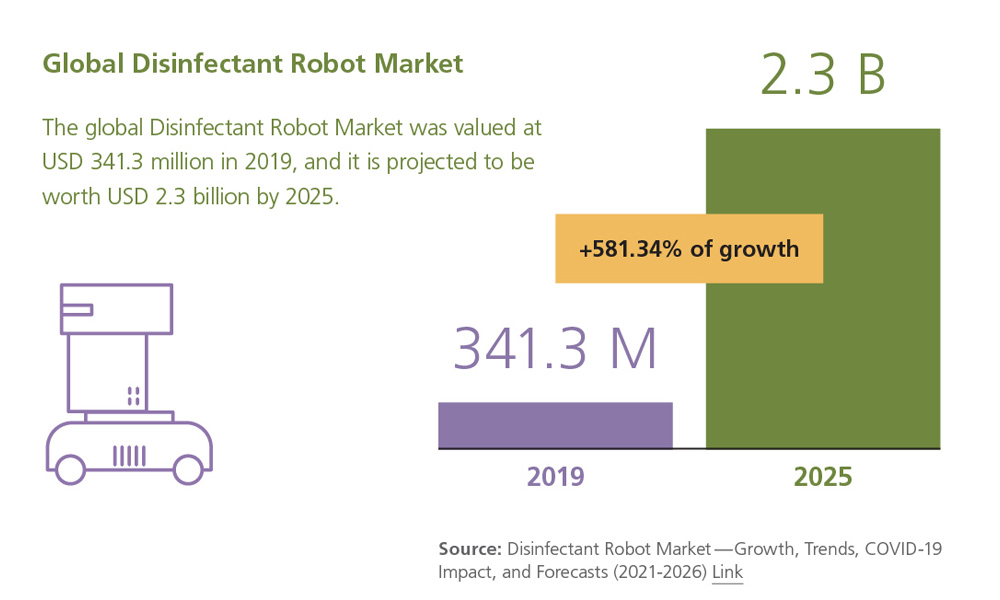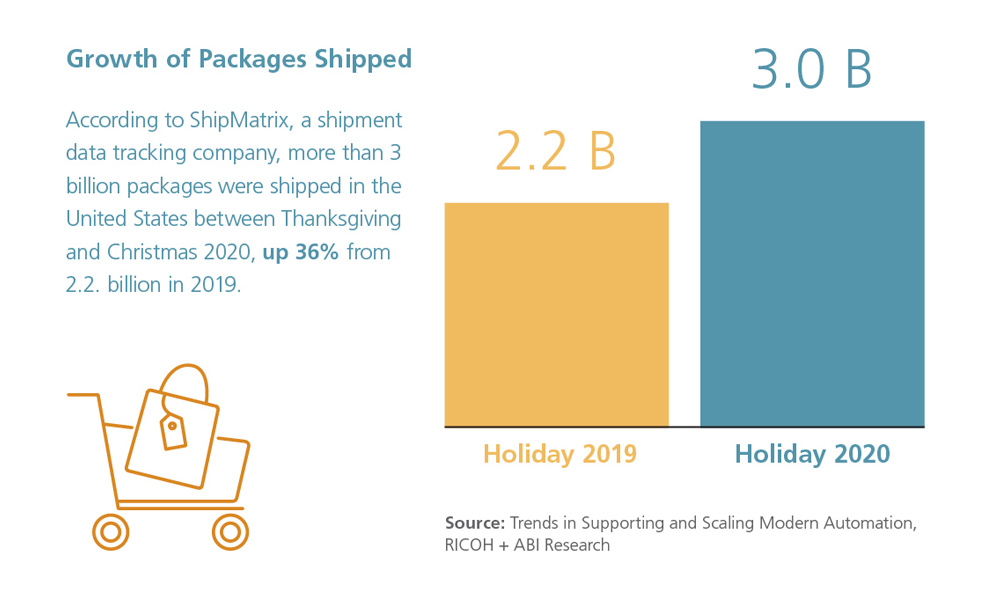The rapid acceleration of automation in manufacturing
The drive to automate with robotics has taken on greater importance as businesses aim to respond faster and act more agile to keep up with market demands. In 2020, the COVID-19 pandemic acted as an accelerant to interest in adopting and developing automation solutions.
In this article, we review a couple of current trends, the increasing demand, and the constraints to scale.
Trend 1: Safety first
Lockdowns and concerns for public safety restricted the availability of workforces and pushed many industries to adopt automation to ensure business continuity. For high-traffic public spaces like airports and healthcare facilities, the need for improved cleaning solutions led to widespread rollouts of autonomous disinfection solutions.
Even with the prospect of returning to more normal operations, businesses will continue to invest in these cleaning and sanitizing solutions, and healthy demand will persist.

Trend 2: e-commerce is here to stay
One of the pandemic’s key challenges for automation players was meeting excess demand, particularly with the rise in e-commerce. As online shopping boomed, major logistics vendors continued to increase investment in warehouse automation solutions to help meet rising demand.
Throughout 2020 and 2021 customers migrated to a dependence on e-commerce, and it’s expected that many will not revert to their old habits once the pandemic is over.
According to ShipMatrix, a shipment data tracking company, more than 3 billion packages were shipped in the United States between Thanksgiving and Christmas 2020, up 36% from 2.2. billion in 2019.
This uptick accelerated the degree to which supply chain stakeholders plan to deploy automation.
E-commerce is here to stay, and retailers must scale to keep up with demand turning. Automation solutions are the key to keep up.

Scale to meet demand
As enthusiasm and interest continue to rise for automation, one of the most notable challenges to scale for manufacturing companies lies in implementing effective service and support of these technologies.
Deploying automation is complex, and inefficiencies brought by post-scale costs and equipment service and support are the most significant inhibitors for vendors.
Enter the need and desire for third-party companies to connect these highly complex ecosystems and turn them into turnkey solutions to meet market demand to assist automation supplier OEMs.
Many automation and robotics vendors have started onboarding trusted, strategic partners for equipment lifecycle tasks like installation, post-commissioning customer support activities, hardware and software support activities, maintenance, and remote technical support.
And the future is bright. Automation and robotics companies that leverage solution providers who effectively understand how to scale and use strategic partners will see incredible growth.
Source : https://www.ricoh-usa.com/en/insights/articles/acceleration-of-automation-in-manufacturing
